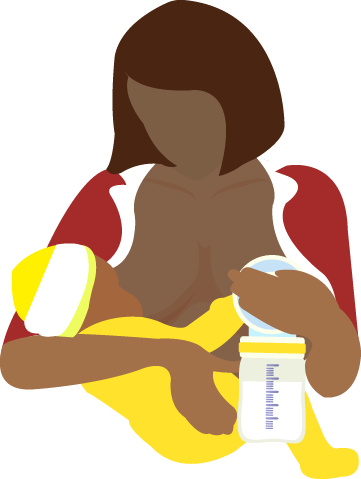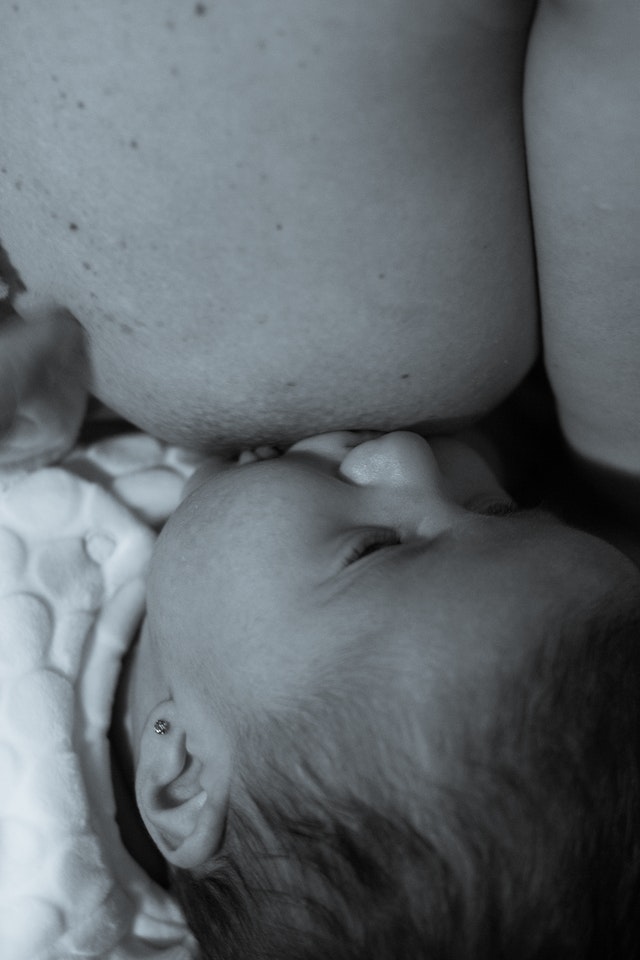Some mothers make more milk than their babies can easily cope with. This is quite common in the first few weeks of breastfeeding, but for some mothers it can continue for longer.
You may be making too much milk if:
Your breasts seem to fill quickly.
Your breasts are often lumpy and tight, despite softening with a breastfeed.
Your baby gags, gulps (especially at the start of a feed) and often will not take the second breast.
Your baby may bring up quite a lot of milk at the end of the feed.
Often, baby gains a lot of weight quickly.
Your baby may be extra fussy between feeds, especially in the evening.
You are changing many more than the usual number of heavy wet nappies.
Your baby generally has a bowel motion at each feed (or even more) that is often green and frothy (and possibly also explosive).
You find the lactose overload article applies to your breastfeeding situation.
In the first few weeks, it is common for mothers to make more milk than their baby needs. Early on, this can sometimes lead to engorgement. It can take about 4 weeks for your breasts to adjust to making the right amount of milk for your baby’s needs.
You can help your supply adjust to your baby’s needs by:
Feeding your baby according to need, rather than to a set schedule. It is common for breastfed babies to feed 8–12 times in 24 hours.
Learning to recognise your baby’s feeding cues can help you work out when your baby needs to feed.
Listening to your body and waking your baby for a feed if your breasts become full and uncomfortable.
Expressing as necessary for your comfort or to help your baby to attach properly if your breasts are very full.
Letting your baby finish the first breast before offering the second, rather than setting a time limit for feeds.
Ensuring your baby is properly attached, as a well-attached baby will drain a breast better.
Unless medically necessary, avoid giving your baby formula or any other fluids (including water).
These suggestions will also be useful if you find that your breasts continue to make too much milk beyond the first few weeks.
From a very early age, some babies choose to feed from one side only at each feed. This is perfectly fine and may help to stabilise your supply quite quickly.
Sometimes ‘block feeding’ may be suggested for a mother who is making too much milk. This is where a mother only offers her baby the one breast whenever her baby wants a feed for a certain block of time (eg over 3–4 hours). Then, when the next block of time (eg the next 3– 4 hours) comes up, the other breast is offered when the baby wants to feed. By offering only one breast per block of time, this helps to ensure that each time the baby comes back to the breast that he receives a smaller volume of breastmilk that is higher in fat and calories. The length of the block of time depends on the degree to which the mother is producing too much milk. Block feeding is nearly always temporary and continuing block feeding longer than is necessary to settle an oversupply can lead to a low milk supply.
It is also possible that you may have a normal supply but a fast let-down reflex if:
Your baby pulls off at the start of a feed when the milk is spraying (letting down) and coughs, but is content for the rest of the feed.
Your baby’s weight gain is adequate, rather than large.
Source: Australian Breastfeeding Association
Link: https://www.breastfeeding.asn.au/bf-info/common-concerns%E2%80%93mum/too-much-milk




